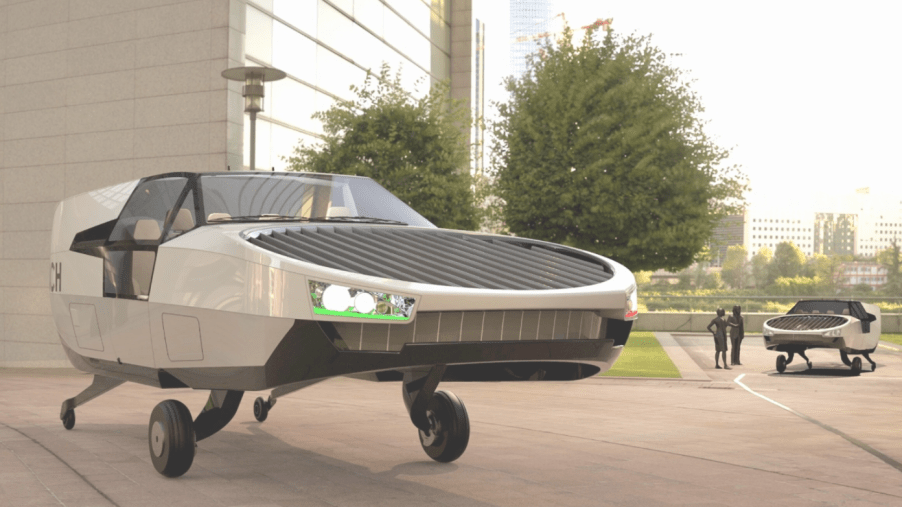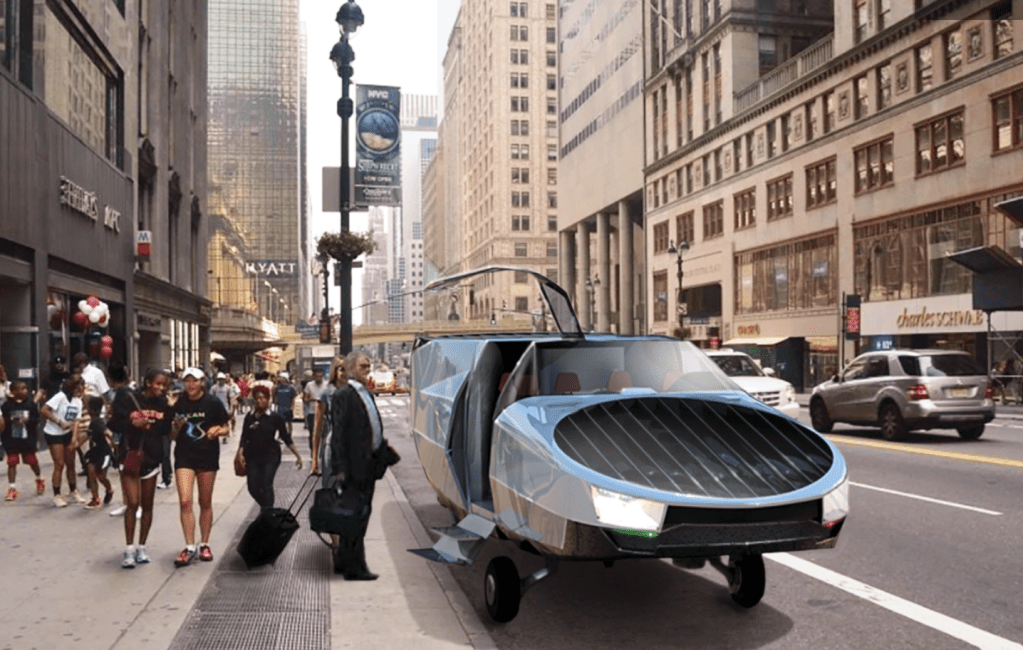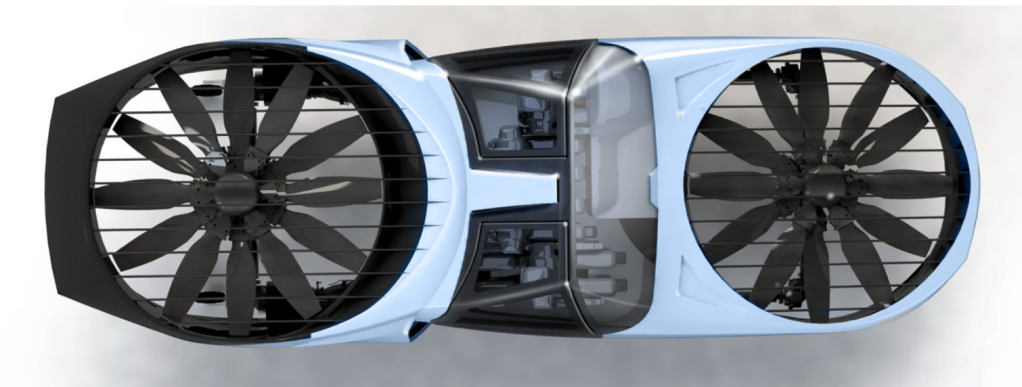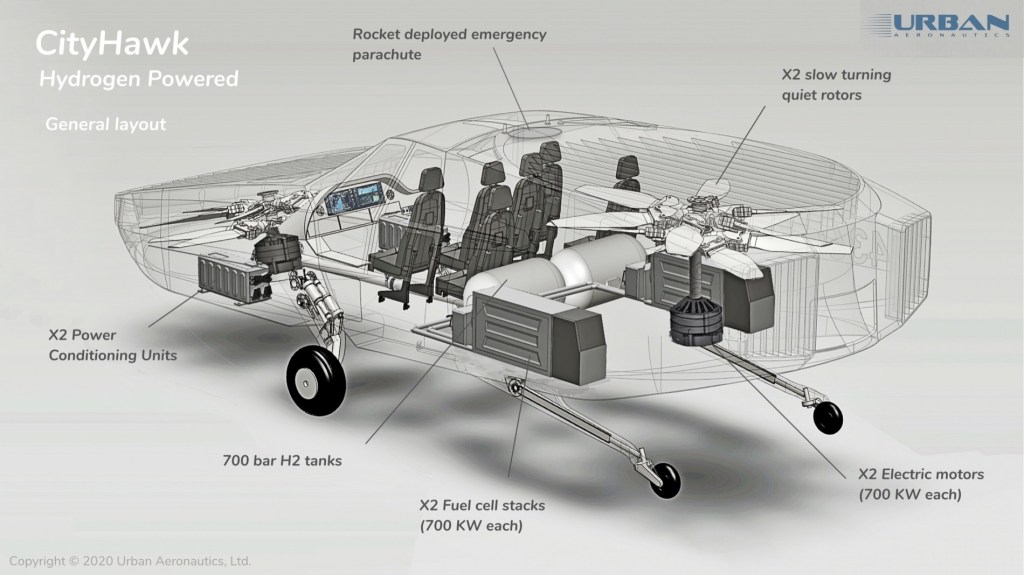
CityHawk Is A Hydrogen-Powered Flying Car Almost Ready For Sale
We don’t care what the date is. It won’t really be the 21st century until we have flying cars. Urban Aeronautics is getting us closer to that day with the CityHawk. It flies but isn’t a winged craft. Instead, it is hiding two rotors hidden underneath its skin. The advantage of this type of Fancraft is usable space and storage. It’s also quiet and free of vibration. So usage as an ambulance or corporate taxi fits the concept well. And, it’s also hydrogen-powered making it fully sustainable. It checks off all of the boxes. So to summarize, the CityHawk is a hydrogen-powered flying car and it’s almost ready for sale.
The goal for all of this is to have a door-to-door flying car

This type of vehicle is called an eVTOL for “electric vertical takeoff and landing.” The goal for all of this is to have a door-to-door flying car ready for when legislation and FAA approval of airspace are also ready. While it’s the size of an SUV it can carry a lot more than a helicopter and can be flown in any type of weather.
It can carry up to six people and reach a top speed of 167 mph. Cruising speed is 145 mph with an estimated range of just under 100 miles. The payload is a bit over 1,600 lbs. With the hydrogen cell technology, charge times take only a few minutes. The cabin is 50% larger than a helicopter. Because of VTOL capabilities it can land and take off from almost anywhere, even rocky terrain.
These types of questions and concerns will be addressed as development continues

To increase your chances of survival in case of loss of power a ballistic parachute has been incorporated. Some question the ballistic chute’s usefulness due to the amount of time necessary for it to open. A lot of these types of questions and concerns will be addressed as development continues.
Recent news involves Urban Aeronautics’ collaborating with HyPoint. They’re a hydrogen fuel systems maker. Until now, prototype CityHawk flying cars used a hybrid powertrain. With HyPoint’s turbo air-cooled hydrogen cells the CityHawk will be a lot more efficient with 100% sustainability. The CityHawk is also FAA Certification Compliant. Once manned testing happens in 2021 it will receive full FAA certification.
Besides the CityHawk, Urban Aeronautics makes a larger version called the Falcon XP

Besides the CityHawk, Urban Aeronautics makes a larger version called the Falcon XP. It can accommodate 14 occupants but takes up about half the space of a helicopter. It uses the same type of Fancraft technology and weighs about 4,400 lbs and has a maximum payload of 3,300 lbs.
With the ongoing development of flying cars, jetpacks, jet boards, and jet suites, our 21st-century future is almost here. While it is taking longer than we had hoped Los Angeles is looking to have air taxis by 2024 when the Olympics arrive. It will be the only way to get around the gridlocked streets of LA. So over the next couple of years, we should be seeing more of this type of technology inching us closer to the future.



